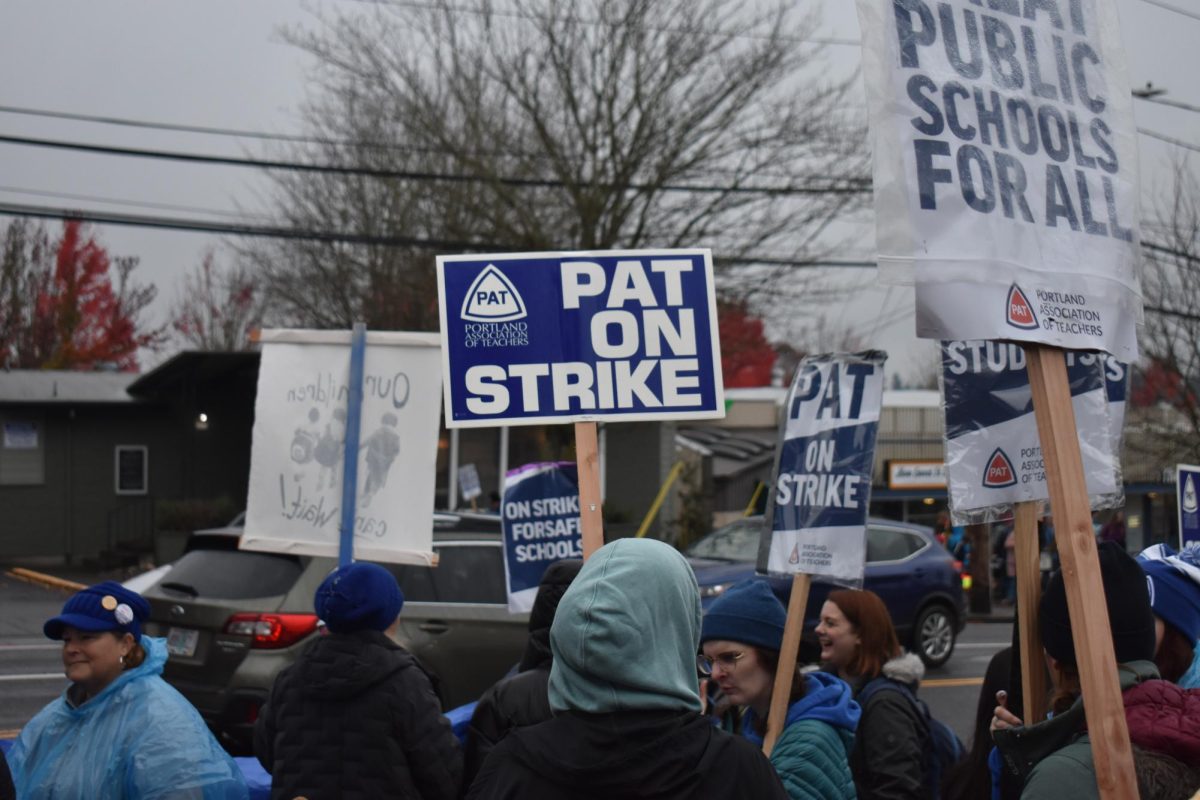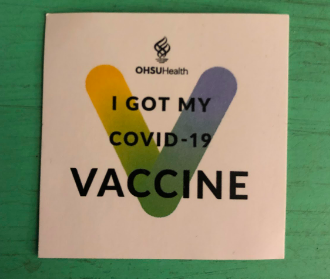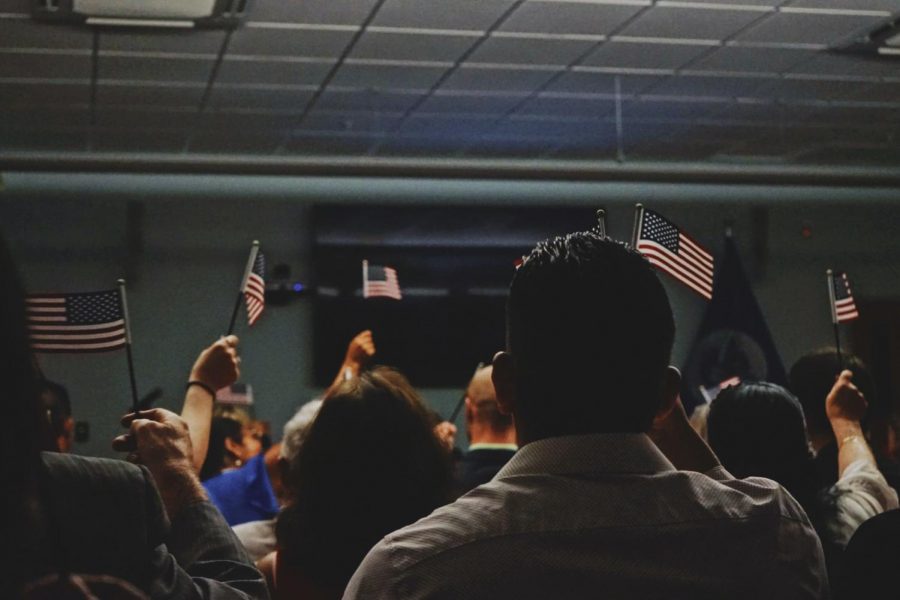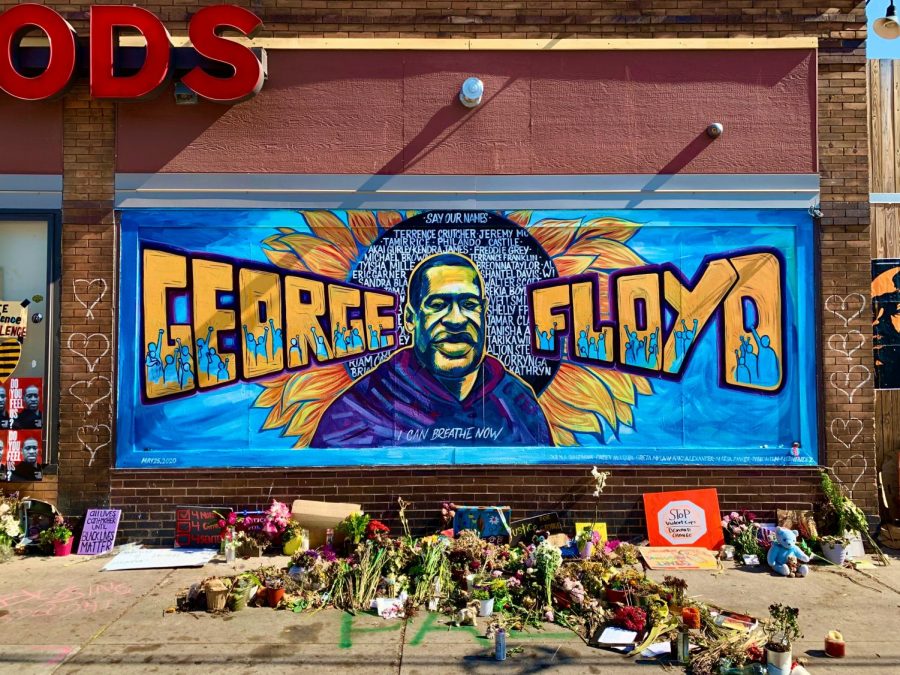The 2023-24 school year that students at Ida B. Wells and other Portland Public Schools (PPS) have experienced has followed the ongoing tradition of being far from normal. The year started off with a few bumps in the road, but just as the seasons changed, so did the direction of the year. By the start of Oct. teachers began warning students of a potential strike. On Nov. 1 this warning came to fruition, preventing students and teachers from returning to school until Nov. 27.
The threat of a strike had been looming for several years, with both working and learning conditions being an ongoing and worsening issue. Students learned in classrooms without heat or air conditioning, vermin infestations, mold and teachers taught overfilled classes without proper planning time or pay. The Portland Association of Teachers (PAT) is the union whose board negotiates with the PPS board to create fair and equitable contracts. PAT members were working without a contract. To strike there needed to be an approved vote and 14 days of notice given. The strike was approved by a 98.9% “Yes” vote from the PAT union members on Oct. 19 and had an undeniable effect on the year lasting a total of 26 days and forcing students to miss 11 instructional days.
To make up for the missed instructional days, the remaining schedule of the year was examined. Many families feared two weeks being removed from their summers, and while three days were added on at the end of the year, there was a goal to make up as many possible days in the first semester. To achieve this the first week of winter break was turned into instructional time. The three remaining days were made up on Jan. 26, Feb. 19 and April 8, which before the strike were non-instructional days.
The strike had many implications besides just changing the schedule of the year. Mia Durham-LeBus, a freshman at IBW and daughter of IBW Spanish teacher Amy Durham, served as a student strike lead and organizer during the strike. Durham-LeBus was one of the individuals who helped organize an IBW student strike that started in Multnomah Village and ended at IBW. “Being the daughter of a teacher, it’s really unique to be able to see how it [the strike] impacted my mom, and how it impacted my friends,” said Durham-LeBus.
Missing school has a multitude of effects on student’s mental health as experienced by many during the pandemic. According to the National Library of Medicine, “both groups [children and college students] reported feeling more anxious, depressed, fatigued, and distressed than prior to the pandemic.” As a student Durham-LeBus and her friends felt both a toll mentally and academically.
“There was learning loss, you know. You come back from [to] school a month later and it’s really hard to get into a flow,” said Durham-LeBus. “Had the district come to a conclusion sooner with us, we could have avoided all that.”
While PPS students had the month off, many high schoolers still had work to do. The strike fell during the same period that many seniors applied to college. Applying to college is a lengthy and complicated process that often requires legion support from family, friends and teachers. Since students had no clue when they were going to return to school any remaining seniors without recommendation letters were left to scramble to obtain them before the start of the strike.
Most Advanced Placement (AP) classes have a strict schedule for what needs to be taught so students can receive all the content before AP testing. Returning from the strike, many AP classes were behind in content, with many students also finding missing gaps in information after a month off.
With the multitude of struggles faced by students, it is important to recognize that these struggles are not confined to just students; teachers also faced many hardships.
Teachers, as hard as they could try, will never be able to spread just academic wisdom. The role of a teacher is many things, a kind ear willing to listen, a cultivator of community and most importantly a role model. During the month of Nov. students did not just lose access to education, but also these other resources that teachers provide.
Strikes have been a historically effective and powerful demonstration of standing up for what you believe in. When the PAT union members voted to strike, they voted to teach their students a lesson of a magnitude so great that no lesson taught in the classroom could meet it. By striking, teachers showed the lengths they would go to provide safe, equitable and equal education. Day after day, through sore feet, cold hands and rainy days teachers fought to return to the classroom as soon as possible. By not backing down teachers taught their students a lesson of perseverance and using their voices.







